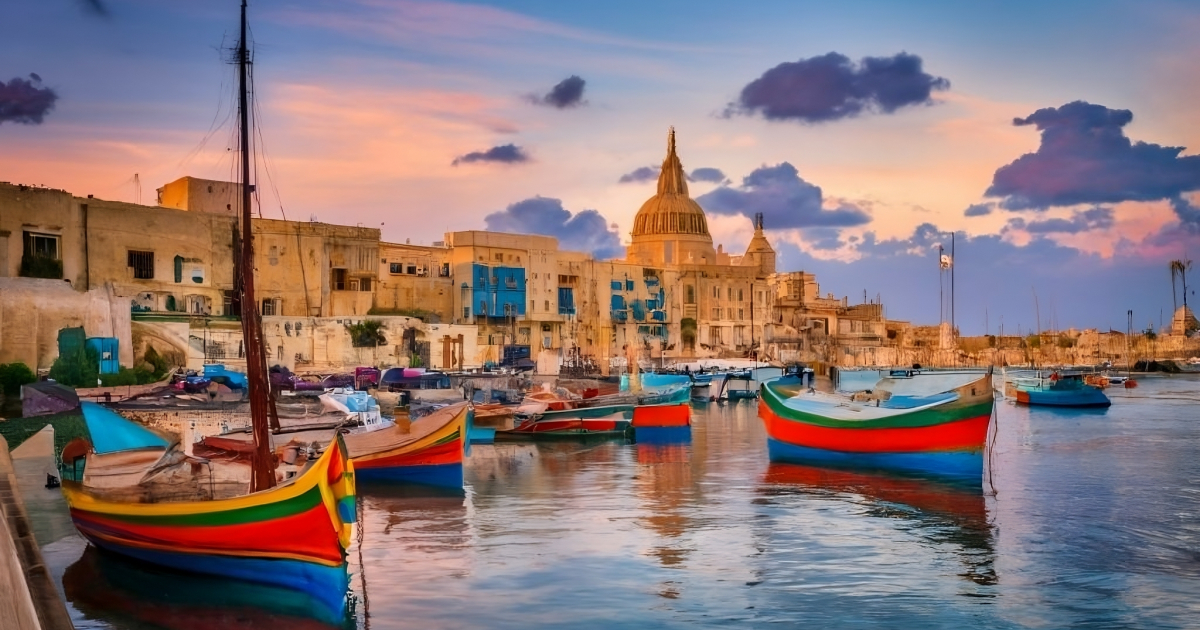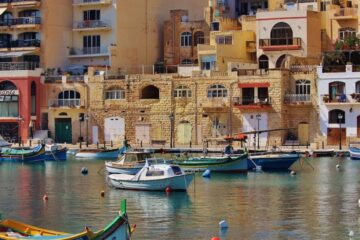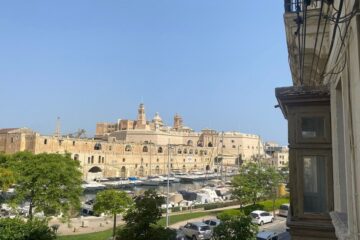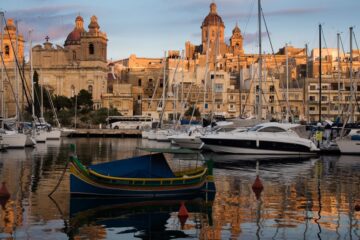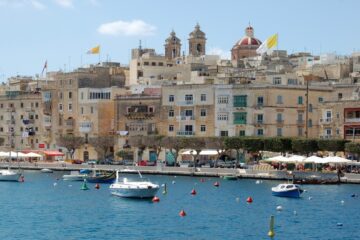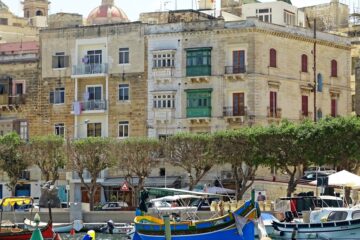Malta, a tiny island nation in the Mediterranean Sea, is home to a unique linguistic landscape. The two official languages of Malta, Maltese and English, coexist in a harmonious blend that is a reflection of the island’s rich and diverse culture.
Maltese
Maltese is a unique language in many ways. It is the only Semitic language that is written in the Latin alphabet. It also has a number of unique grammatical features, such as the use of a dual number.
One of the most distinctive features of Maltese is its vocabulary. Maltese has many loanwords from other languages, including Arabic, Greek, Latin, Sicilian, and Italian. This is due to Malta’s long and complex history, which has seen the island being ruled by a number of different empires.
Despite its many influences, Maltese has retained its own unique identity. It is a vibrant and living language spoken by over half a million people worldwide.
Here are some specific examples of Maltese words that are derived from other languages:
- Arabic: barra (outside), xogħol (work), familja (family)
- Greek: qamra (moon), siġra (tree), ġnien (garden)
- Latin: ġurnata (day), ħadd (Sunday), għada (tomorrow)
- Sicilian: ħobż (bread), qasam (part), ġir (stone)
- Italian: bħal (like), xejn (nothing), dar (house)
Maltese is a beautiful and unique language that is a reflection of Malta’s rich and diverse history and culture. It is a language that is worth learning, and it is a language that is sure to fascinate and intrigue you.
Read also: New Year’s Eve In Malta: The Ultimate Guide
The National Language of Malta
Maltese is a unique language in many ways. It is the only Semitic language written in Latin script, and it has a unique blend of Arabic, Sicilian, and Italian influences. Maltese is also a very expressive language, and it is often used to convey strong emotions.
Maltese is used in all aspects of Maltese life. It is the language of government, education, and the media. It is also the language of business, social interaction, and entertainment. Maltese is a living language, and it is constantly evolving to reflect the changing needs of its speakers.
Here are some specific examples of how Maltese is used in Malta:
- Government: Maltese is the official language of Malta, and it is used in all government documents and proceedings.
- Education: Maltese is the language of instruction in all Maltese schools.
- Media: Maltese is the language of all Maltese newspapers, magazines, radio stations, and television channels.
- Business: Maltese is the language of business in Malta. Many businesses use Maltese in their internal communications and with their customers.
- Social interaction: Maltese is the language that Maltese people use to communicate with each other in their everyday lives. It is the language of family, friends, and neighbors.
- Entertainment: Maltese is used in all aspects of Maltese entertainment, including music, theater, and cinema.
Maltese is an important part of Maltese culture and identity. It is a language loved and cherished by Maltese people, and it is a language that is here to stay.
In addition to the above, Maltese is also used in some academic fields, such as linguistics, history, and anthropology. Maltese is also used in some religious contexts, such as in the Catholic Church and in some Muslim communities.
Maltese is a vibrant and diverse language, and it is an important part of the Maltese way of life.
English
English is a global language that is widely spoken around the world. It is also a strong presence in Malta. English is important for business, tourism, and higher education. It is also the language of choice for many Maltese people who want to pursue higher education or work abroad.
Important for Business, Tourism, and Higher Education
English is an important language for business in Malta. Many businesses in Malta use English in their marketing materials and customer service interactions. English is also important for tourism in Malta. English is the language of many tourist attractions and businesses. English is also the language of choice for many Maltese students who want to pursue higher education abroad.
Used in Many Public and Private Contexts
English is used in many public and private contexts in Malta. For example, many government websites are in English, and many businesses have English-speaking staff. English is also widely used in the media, including newspapers, magazines, and television.
Comparison of Maltese and English
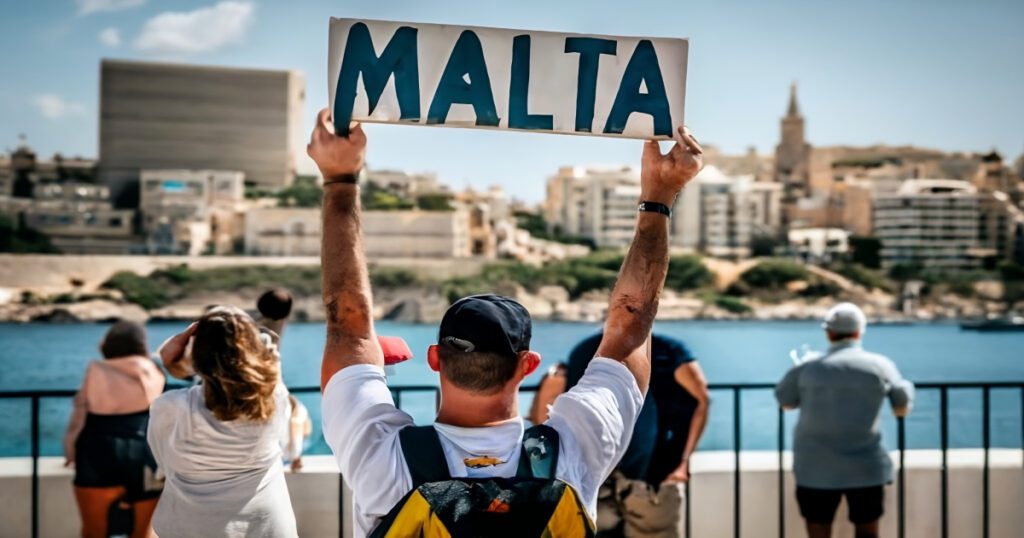
Similarities
- Both Maltese and English are Indo-European languages, which means that they share a common ancestor language.
- Both languages have articles (a/an/the) and prepositions (to/of/in/from/etc.).
- Both languages have subject-verb-object word order.
- Both languages have a complex system of verb conjugations.
Differences
- Maltese is a Semitic language, while English is a Germanic language. This means that they have different vocabularies and grammar systems.
- Maltese has a greater influence from Arabic, while English has a greater influence from Latin and French.
- Maltese has a more complex verb system than English.
- Maltese has a more flexible word order than English.
Here are some specific examples of the differences between Maltese and English:
- Vocabulary: Maltese has many words that are borrowed from Arabic, such as “Hekk” (so), “Min” (who), and “Għal” (for). English has many words that are borrowed from Latin and French, such as “animal”, “country”, and “government”.
- Grammar: Maltese verbs are conjugated for person, number, gender, tense, mood, and aspect. English verbs are conjugated for person, number, tense, and mood.
- Word order: Maltese word order is more flexible than English word order. For example, the subject and object of a sentence can be inverted in Maltese, while this is not possible in English.
Despite their differences, Maltese and English are both rich and expressive languages. They are also both important languages in Malta, where they are used side-by-side in many different contexts.
It is also worth noting that Maltese English is a variety of English that is spoken in Malta. It is influenced by Maltese grammar and vocabulary, and it has its own unique features. Maltese English is a vibrant and growing language, and it is an important part of the Maltese linguistic landscape.
Read also: Things To Do In Attard: The Quiet Maltese Village
How They Are Used Together in Malta
Maltese and English are often used together in Malta in a variety of ways. Here are some examples:
- Government: Maltese and English are both official languages of Malta, so government documents and proceedings are typically available in both languages.
- Education: Maltese is the language of instruction in all Maltese schools, but English is also widely taught as a second language. Many schools use English as the language of instruction for certain subjects, such as science and technology.
- Business: Many businesses in Malta use both Maltese and English in their internal communications and with their customers. This is because English is seen as a language of international business, and it can be helpful for businesses to be able to communicate with customers from all over the world.
- Media: Maltese and English are both used in the Maltese media. Maltese newspapers, magazines, radio stations, and television channels all produce content in both languages.
- Social interaction: Many Maltese people switch between Maltese and English in their everyday conversations, depending on the context. For example, they might use Maltese to talk to their family and friends, but use English when talking to tourists or business associates.
This use of Maltese and English together is known as code-switching. Code-switching is a common feature of bilingualism, and it is a way for speakers to make use of both of their languages in order to communicate effectively.
In addition to the above, Maltese and English are also used together in some academic fields, such as law and medicine. Maltese and English are also used in some religious contexts, such as in sermons and religious education classes.
The use of Maltese and English together in Malta is a reflection of the country’s multicultural and multilingual society. It is also a reflection of the fact that Maltese and English are both important languages for Maltese people.
Maltese and English are two languages that complement each other well. Maltese is the language of everyday life and culture, while English is the language of international business and communication. The use of these two official languages together allows Maltese people to access the best of both worlds.
Conclusion
The coexistence of Maltese and English in Malta has created a unique linguistic landscape that is a reflection of the island’s rich and diverse culture. Maltese people are generally fluent in both languages, and they use them interchangeably in different contexts. This linguistic melting pot is a testament to Malta’s ability to embrace and celebrate its diversity.
Maltese is a unique language in many ways, and it is a reflection of Malta’s long and complex history. English is a global language that is important for business, tourism, and higher education in Malta.
The unique linguistic landscape of Malta is a valuable asset to the island. It allows Maltese people to connect with each other and with the world around them. It also makes Malta a more attractive destination for tourists and businesses.
I hope this article has given you a better understanding of the official languages of Malta and the unique linguistic landscape that exists on the island. If you are ever lucky enough to visit Malta, I encourage you to experience this linguistic melting pot for yourself.

